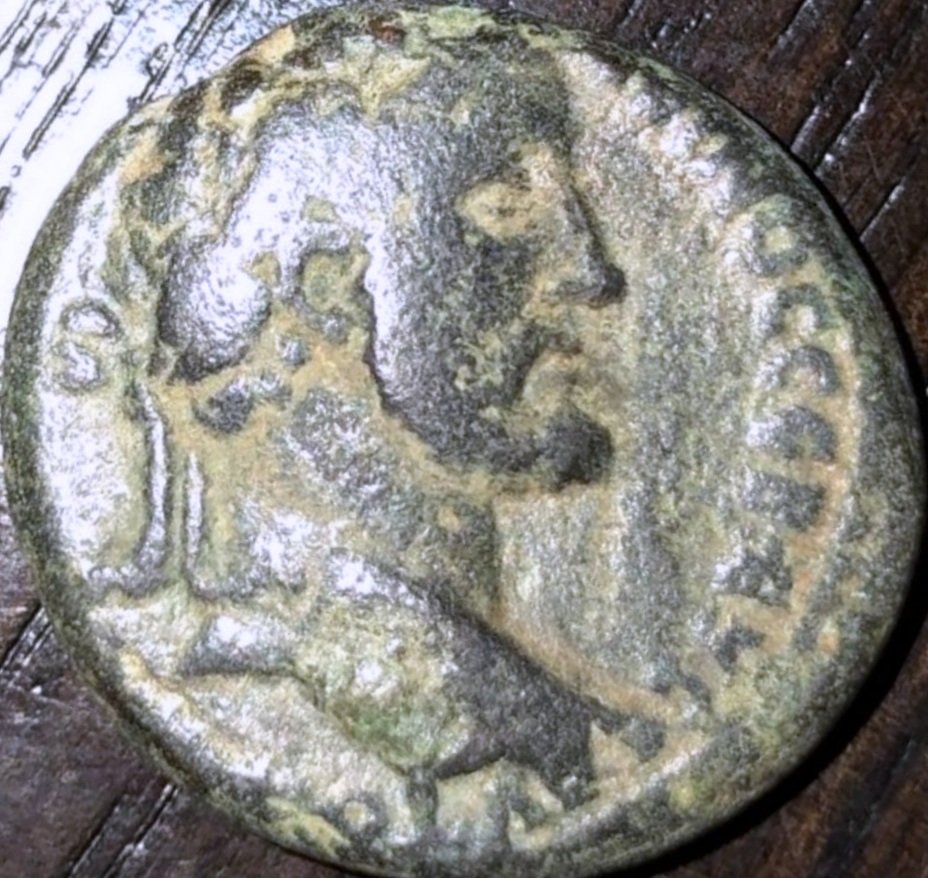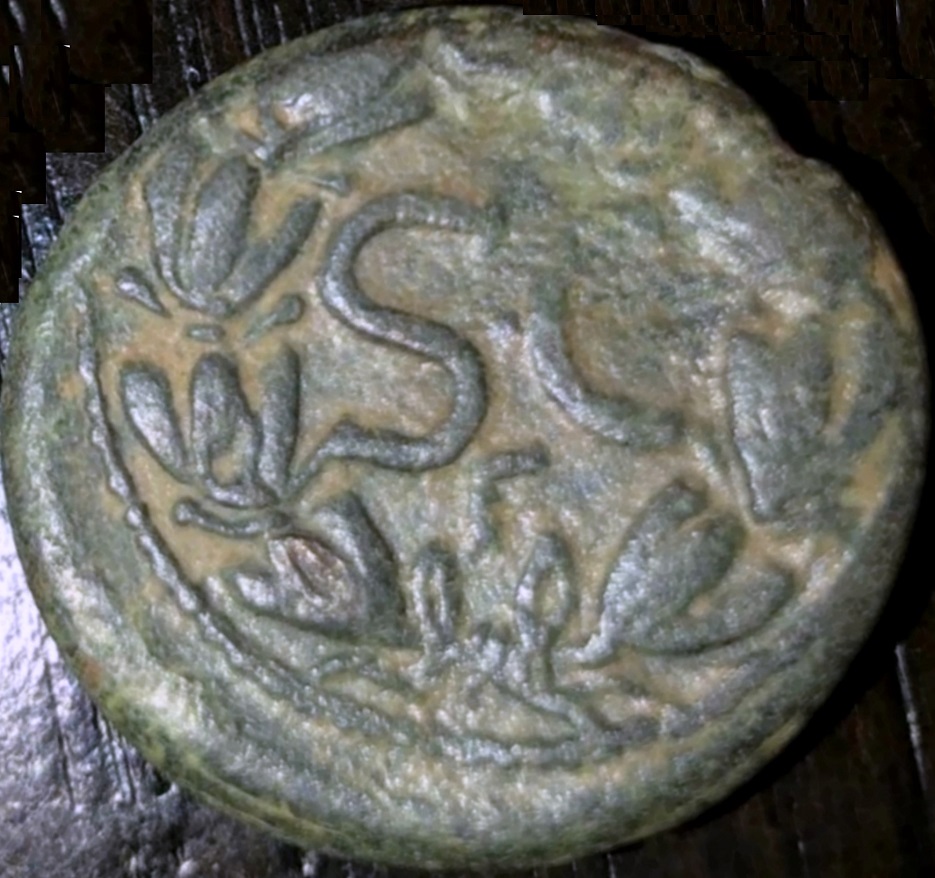|
||||||||||||||||||||||||
| Antiochia, assarion, Antoninus Pius, Senatus Consulto | ||||||||||||||||||||||||
|
21.8.2024
..da
Ancient & Medieval Coins.I’m considering giving this coin to a friends 12 year old daughter. I was showing him and his wife some coins at a football practice (we talked about it a previous day and figured I’d bring a few to show). Anyways their daughter was there, and out of the 30 kids that have seen some of my coins, her face lit up upon seeing and holding these coins. It reminded me of myself the first time I saw an ancient coin and the amazement I had. Now she’s asking me how and where to buy one because she really wants one. I won a lot of coin in a little raffle years ago, this is one I never really found anything out about. It’s it in good enough condition to appreciate it so I think she would really enjoy it. I was just wondering if anyone can give me any info on it so I can pass it along to her so she can continue to learn about it. It’s 11.2 grams and 22-24mm Thank you. |
||||||||||||||||||||||||
|
||||||||||||||||||||||||
|
Rome, 22.8.2024
Dear,below I report the significant elements regarding the coin above: Assarion1, mint of Antioch ad Orontem2, 138÷161 A.D., BMC XX 308 (pag. 188), RPCIV.3 temporary 6999, McAlee 555c3. Summary description (worn or
otherwise illegible parts of the legend are
indicated in red): A web search for coins of the figure type yielded the following results:
Best regards. (1) Assarion
(hellenised form of the Roman as). The assarion
was widely used in the Aegean and Asia Minor,
usually with an even smaller weight than the as -
see
links). I collect in the table below the
physical characteristics of the assarions of the links
above:
(2) Antioch, the third city of the empire and capital of Syria (see link), stood on the banks of the Orontes. (3) not available online for reference. (4) ΑΥΤΟ ΚΑΙ ΤΙ ΑΙΛ ΑΔΡΙ ΑΝΤWΝ-ЄΙNOC CEB ЄY (ΑYTOkράτωρ KAIσαρ ΤIτος ΑΙΛιος ΑΔΡΙανός ΑΝΤWΝЄΙΝΟC CEBαστός ΕYσεβής - equivalent to Latin "Imperator Caesar Titus Aelius Hadrianus Antoninus Augustus Pius"). I take the following notes from https://en.wikipedia.org/wiki/Antoninus_Pius: Titus Aelius Hadrianus Antoninus Pius (19 September AD 86 – 7 March 161) was Roman emperor from AD 138 to 161. He was the fourth of the Five Good Emperors from the Nerva–Antonine dynasty. Born into a senatorial family, Antoninus held various offices during the reign of Emperor Hadrian. He married Hadrian's niece Faustina, and Hadrian adopted him as his son and successor shortly before his death. Antoninus acquired the cognomen Pius after his accession to the throne, either because he compelled the Senate to deify his adoptive father or because he had saved senators sentenced to death by Hadrian in his later years- His reign is notable for the peaceful state of the Empire, with no major revolts or military incursions during this time. A successful military campaign in southern Scotland early in his reign resulted in the construction of the Antonine Wall. Antoninus was an effective administrator, leaving his successors a large surplus in the treasury, expanding free access to drinking water throughout the Empire, encouraging legal conformity, and facilitating the enfranchisement of freed slaves. He died of illness in AD 161 and was succeeded by his adopted sons Marcus Aurelius and Lucius Verus as co-emperors. (5) S C. What is special about this coin, according to the cointalk forum: The main mint of Syria was in Antioch and produced a large number of bronze coins with the inscription S C within a wreath in the reverse. These issues for Antioch began with Augustus and continued until Philip I (244-249). There is disagreement among scholars about the meaning of the abbreviation S C.: Wayne Sayles (Sayles, Wayne G.. Ancient Coin Collecting IV: Roman Provincial Coins. Krause Publications, 1998, p. 69) believes that the abbreviation probably stands for Senatus Consulto, as in Roman imperial coins to signify that the Roman Senate had approved the issue. However, Metcalf (Metcalf, William E. The Oxford Handbook of Greek and Roman Coinage. Oxford University Press, 2016, p. 470) points out that the Roman Senate had no authority over the province of Syria, which was under the direct control of the emperor. One possible explanation is that the Senate had issued a Senatus Consultum approving a decision by Augustus to start issuing this type of ‘anonymous’ bronze coinage. Another possibility is that SC on these Syrian coins is an abbreviation for something other than Senatus Consulto, although nothing obvious is in itself proposable. Similarly, Noreña [Noreña, Carlos F. ‘Heritage and Homogeneity: The Civic Coinage of Roman Antioch,’ in S. Alcock, M. Egri, and J. Frakes (eds.), Beyond Boundaries: Connecting Visual Cultures in the Provinces of Ancient Rome (Getty Publications, 2016), p. 298] also adheres to the Senatus Consulto theory. Against the idea that SC stands for Senatus Consulto on the coins of Antioch is the fact that the abbreviation also occurs on silver coins from the region, whereas in Roman imperial issues, SC almost never occurs, except on bronze issues. Some have suggested that the abbreviation stands for Syria Coele, but I am sceptical about this for several reasons, firstly, Syria Coele is close to the province of Syria where Antioch is located. Seleucis ad Piera was the port of Antioch in Orontes. Second, if this reverse inscription were an abbreviation for the province, I would expect it to read CS, not SC, since in antiquity the region was known as Κοίλη Συρία, transliterated in Latin as Coelosyria and Celesyria. Finally, there is no numismatic or historical reference to support the idea that the abbreviation means ‘Syria Coele’. (6) Γ, possible numeral letter(s) for this issue are: Α, Β, Γ, Δ, Ε, Ϛ, Ζ, Η, Θ, Ι, ΙΑ, ΙΒ, Ν (rotated Ζ?) or Υ. |
||||||||||||||||||||||||
|
||||||||||||||||||||||||

